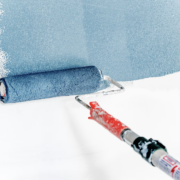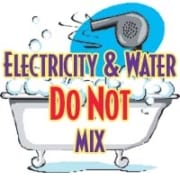Identifying Red Flags During a Home Inspection
Buying a new home is an exciting time in anyone’s life, but ensuring you’re making a wise investment is crucial. One of the essential steps in the home-buying process is a thorough home inspection. It allows you to identify any underlying issues within the property that may significantly impact its value and your future maintenance costs. This blog will outline some significant red flags to look out for during a home inspection.

Identifying Red Flags During a Home Inspection
Structural Issues
Pay close attention to any signs of structural problems during a home inspection. Cracks in the foundation, sagging or sloping floors, or uneven walls can indicate significant structural issues. Addressing these problems can be costly, potentially affecting the home’s stability and safety.
Water Damage
Water damage is a common concern in many homes. Inspectors may find stains on ceilings, walls, or floors, which could suggest recurring water issues. Musty odors or visible mold growth indicate a more severe problem. If left unaddressed, water damage can lead to structural issues, mold infestation, and costly repairs.
Electrical Problems
Outdated or faulty electrical systems can pose severe hazards. During the inspection, look for signs of unsafe wiring practices, such as knob-and-tube wiring or exposed wires. Additionally, check for faulty connections, flickering lights, or a lack of proper grounding. Electrical upgrades can be expensive, and an unsafe electrical system can compromise your well-being.
Plumbing Issues
Plumbing problems can cause significant headaches and expenses. Inspectors may identify low water pressure, leaky pipes, or insufficient drainage systems. These issues can result in water damage, mold growth, and additional expenses. Look for signs of leaks or water stains around plumbing fixtures.
Roofing Problems
A sturdy roof is vital to protect your home from the elements. Ask the inspector to check for any signs of damage, missing or deteriorated shingles, or leaks. A compromised roof can result in water intrusion, structural decay, and costly repairs. Remember, replacing a roof can be a substantial investment, so ensure it is in good condition before purchasing.
Pest Infestation
A home’s infestation by pests like termites, rodents, or other insects can adversely impact its structure and safety. Inspectors may notice signs of infestation, such as rodent droppings, chew marks, or termite damage. Addressing these issues promptly is critical to prevent further damage and potential health risks.
HVAC System Deficiencies
The heating, ventilation, and air conditioning (HVAC) system is crucial in maintaining a comfortable and healthy living environment. Inspectors will assess the HVAC system’s age, condition, and maintenance. An outdated or poorly maintained system can result in inefficient temperature control, higher energy bills, and the need for costly repairs or replacements.
Environmental Hazards
Finally, be aware of any potential environmental hazards in the home. Inspectors may identify the presence of asbestos, lead-based paint, radon gas, or poor indoor air quality. These hazards can pose significant health risks and require specialized treatment or remediation. Consider the potential costs and health implications before proceeding with the purchase.
A home inspection is a crucial step in the home-buying process, and identifying red flags early on can save you from potential headaches and financial burdens down the line. By being aware of common issues such as structural problems, water damage, electrical and plumbing deficiencies, roofing issues, pest infestations, HVAC system faults, and environmental hazards, you can make an informed decision when purchasing a home. Remember, involving a reputable home inspector is critical to thoroughly assessing your prospective property.










Leave a Reply
Want to join the discussion?Feel free to contribute!